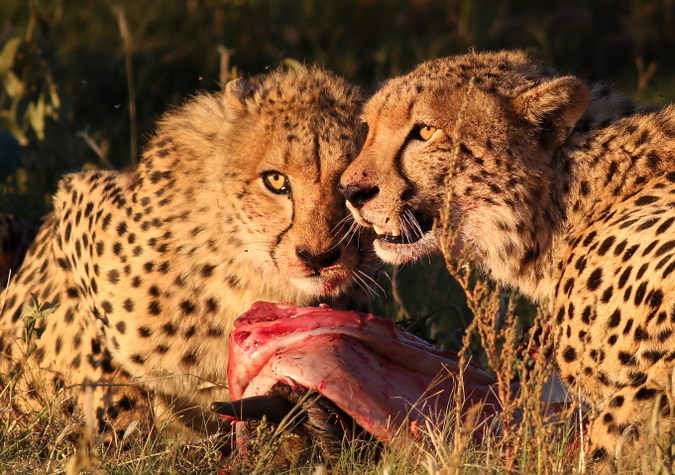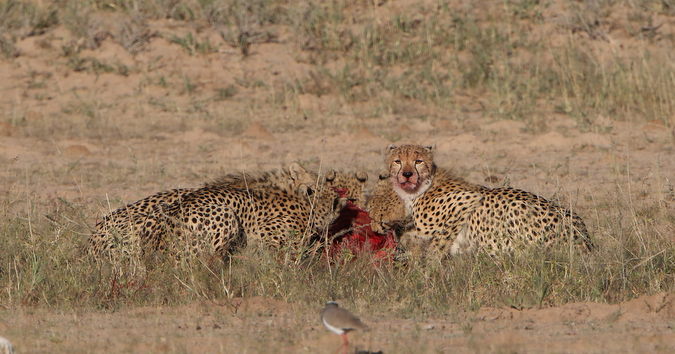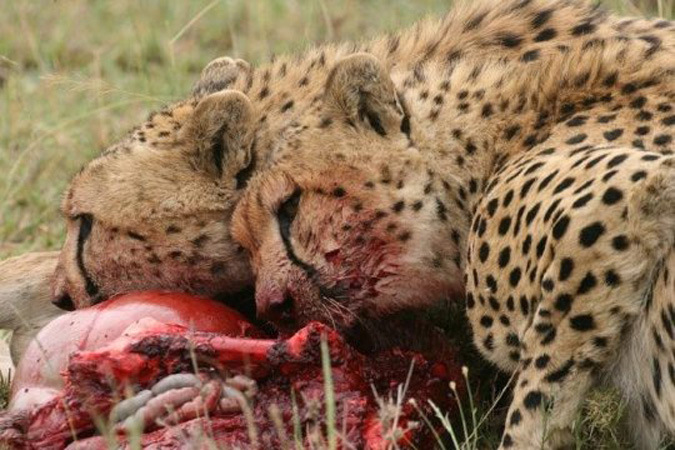
Cheetahs in the Serengeti National Park change their behaviour when handling large kills based on the threats presented by lions and hyenas, according to researchers. A new study – led by Anne Hilborn of Virginia Tech’s College of Natural Resources and Environment in the US – has revealed that male cheetahs and single females eat their prey as quickly as possible, whereas mother cheetahs take things a bit more slowly, allowing their cubs to eat their fill while keeping an eye out for possible threats.
Hilborn and her colleagues studied 35 years of observations from more than 400 hunts involving 159 cheetahs in the Serengeti in northern Tanzania to find out whether cheetahs’ prey handling behaviour altered in response to the threats from larger predators.
Cheetahs do not have the strength to haul their prey up trees like leopards do, nor can they defend themselves against larger predators, such as lions and hyenas. This is why they have developed certain tactics when it comes to hunting and eating their prey, and research shows that they tend to hunt when larger predators are away or less active.

Lions and hyenas are known to attack cheetah cubs, as well as steal prey (known as kleptoparasitism). The primary threat for male cheetahs and single females is having their prey stolen – this is why they will eat their prey as quickly as possible, rather than keeping an eye out for attacks, to reduce the risk of theft. On the other hand, a mother cheetah prefers safety over speed, and her main concern is to ensure that her cubs are safe and that they can get enough to eat – which can take some time as cubs can be slow eaters and will take time out to rest and play.
“Instead of speed, mothers use vigilance to minimise risk,” explains Hilborn. “They spend more time paused before eating, perhaps also to catch their breath, and are more vigilant. This increases the amount of time they spend eating, which in turn increases their overall handling time.”
The ability of cheetahs to modify their prey handling behaviour depending on the type of risk they face likely allows them to coexist with numerous larger carnivores.

Full report: Springer’s Behavioral Ecology and Sociobiology journal, Anne Hilborn, Nathalie Pettorelli, Tim Caro, Marcella J. Kelly, M. Karen Laurenson, Sarah M. Durant (2018): Cheetahs modify their prey handling behaviour depending on risks from top predators
To comment on this story: Login (or sign up) to our app here - it's a troll-free safe place 🙂.![]()






